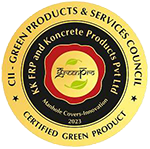Fiber-Reinforced Polymer (FRP) manufacturing processes involve the use of composite materials, typically consisting of a polymer matrix reinforced with fibers. FRPs are known for their high strength-to-weight ratio, corrosion resistance, and versatility. The specific manufacturing process can vary depending on the intended application and the type of fibers and resins used. Here’s an overview of the common FRP manufacturing processes:
- Fiber Selection:
- The choice of fiber reinforcement is crucial. Common fibers used include fiberglass, carbon fiber, aramid, and natural fibers. The type of fiber selected impacts the material’s properties.
- Resin Selection:
- The polymer matrix is typically made from thermosetting or thermoplastic resins. Epoxy, polyester, vinyl ester, and phenolic resins are often used. The choice of resin affects the material’s chemical resistance and curing process.
- Prepreg Fabrication:
- In some cases, fibers are pre-impregnated with resin to create prepreg materials. This ensures a controlled resin-to-fiber ratio and facilitates layup processes.
- Layup:
- In this step, layers of fiber and resin are stacked and arranged in a specific pattern to form the desired shape and structure. Layup can be manual or automated, depending on the complexity and scale of the part.
- Vacuum Bagging:
- To remove air and excess resin, the layup may be placed in a vacuum bag, and vacuum pressure is applied. This process is known as vacuum bagging and helps improve the material’s quality and strength.
- Curing:
- The composite is then cured by applying heat, either through an oven or autoclave, depending on the resin system. The curing process transforms the resin from a liquid to a solid state, creating a strong bond between the fibers.
- Trimming and Shaping:
- After curing, the part may require trimming and shaping to meet the desired dimensions and tolerances.
- Surface Finish:
- The final product’s surface may be treated or finished, depending on the application. This can include painting, gel-coating, or sanding to achieve the desired appearance and protection.
- Quality Control and Testing:
- FRP parts undergo rigorous quality control and testing to ensure they meet the required standards and specifications. This may include mechanical testing, non-destructive testing, and inspection for defects.
- Assembly:
- In some applications, FRP components are assembled into larger structures or products, requiring additional manufacturing steps.
The specific manufacturing process can vary depending on the industry and the intended application. For instance, processes for manufacturing FRP boat hulls, automotive components, aerospace structures, and architectural elements may differ in detail. The choice of materials, fabrication techniques, and quality control measures are tailored to the specific requirements of each application.





